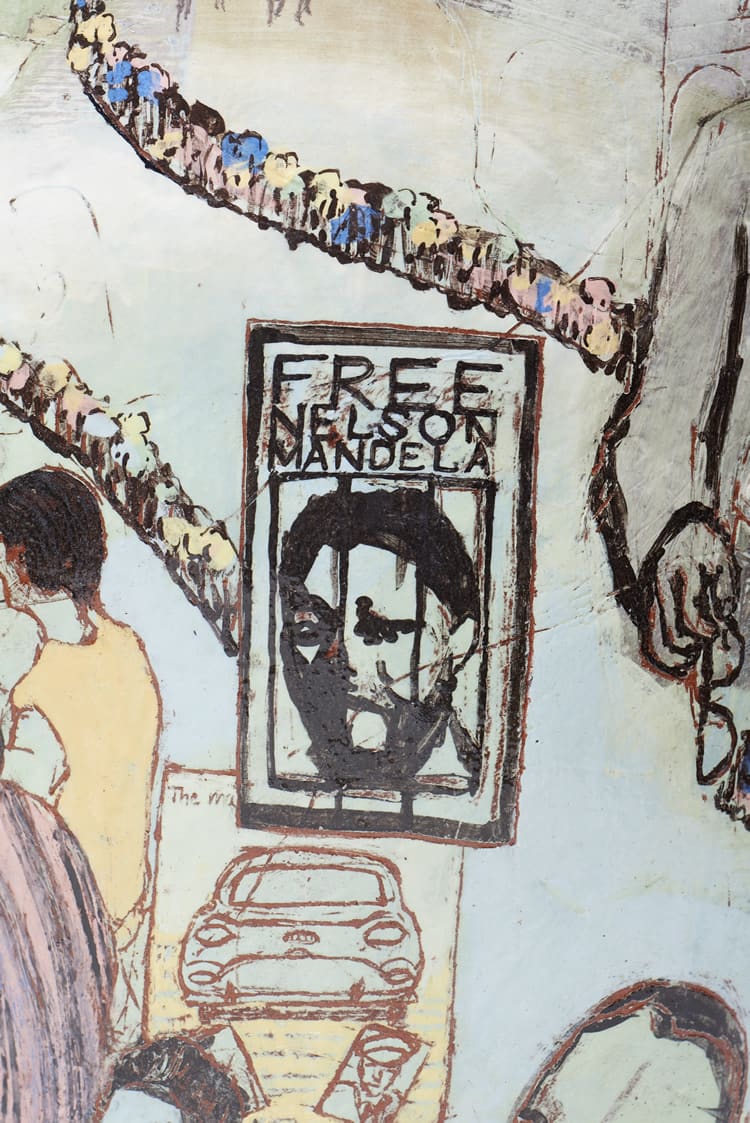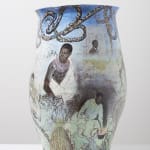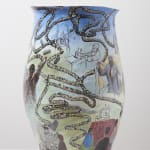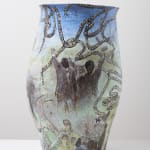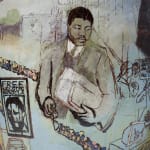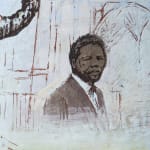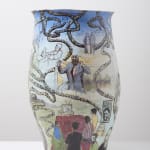Claudia Clare
Remembering Nelson Mandela, 2015
height 76.8 cm
height 30 1/4 in
height 30 1/4 in
Further images
Considered one of the most important within Claudia's output this work tells the story of the life of Nelson Mandela. Son of a chief, Nelson Mandela studied law and became...
Considered one of the most important within Claudia's output this work tells the story of the life of Nelson Mandela.
Son of a chief, Nelson Mandela studied law and became one of South Africa's first black lawyers. Early in the 1950s he was elected leader of the youth wing of the ANC (African National Congress) liberation movement. When the country's white minority government prohibited the ANC in 1960, Mandela became convinced that armed struggle was inevitable. Inspired by the guerrilla wars in Algeria and Cuba, he organized a military underground movement that engaged in sabotage. In 1962 he was arrested and sentenced to life imprisonment for high treason and conspiracy against the state.
From 1964 to 1982 he was confined to the notorious prison island Robben Island, together with several other resistance leaders. He was then moved to prison on the mainland until his release in 1990. During his imprisonment, Mandela became a rallying point for South Africa's oppressed, and the world's most famous political prisoner.
In 1994 Mandela was elected to be South Africa's president - the first black head of state. The election was the first mult-racial election in South Africa in which over 19million people voted. The ribbon like garlands across the Clare's pot depict the queues of people voting. The ANC, of which Mandela was leader, won 62% of the vote.
Nelson Mandela shared the Peace Prize with the man who had released him, President Frederik Willem de Klerk in 1993, because they had agreed on a peaceful transition to majority rule.
Son of a chief, Nelson Mandela studied law and became one of South Africa's first black lawyers. Early in the 1950s he was elected leader of the youth wing of the ANC (African National Congress) liberation movement. When the country's white minority government prohibited the ANC in 1960, Mandela became convinced that armed struggle was inevitable. Inspired by the guerrilla wars in Algeria and Cuba, he organized a military underground movement that engaged in sabotage. In 1962 he was arrested and sentenced to life imprisonment for high treason and conspiracy against the state.
From 1964 to 1982 he was confined to the notorious prison island Robben Island, together with several other resistance leaders. He was then moved to prison on the mainland until his release in 1990. During his imprisonment, Mandela became a rallying point for South Africa's oppressed, and the world's most famous political prisoner.
In 1994 Mandela was elected to be South Africa's president - the first black head of state. The election was the first mult-racial election in South Africa in which over 19million people voted. The ribbon like garlands across the Clare's pot depict the queues of people voting. The ANC, of which Mandela was leader, won 62% of the vote.
Nelson Mandela shared the Peace Prize with the man who had released him, President Frederik Willem de Klerk in 1993, because they had agreed on a peaceful transition to majority rule.
Join our community of art lovers
Want to be the first to hear our news and get invitations to special events and private views? Leave us your email. We won't sell it, we won't pester you, that's a promise. We just to share with you about art.
* denotes required fields
We will process the personal data you have supplied to communicate with you in accordance with our Privacy Policy. You can unsubscribe or change your preferences at any time by clicking the link in our emails.





